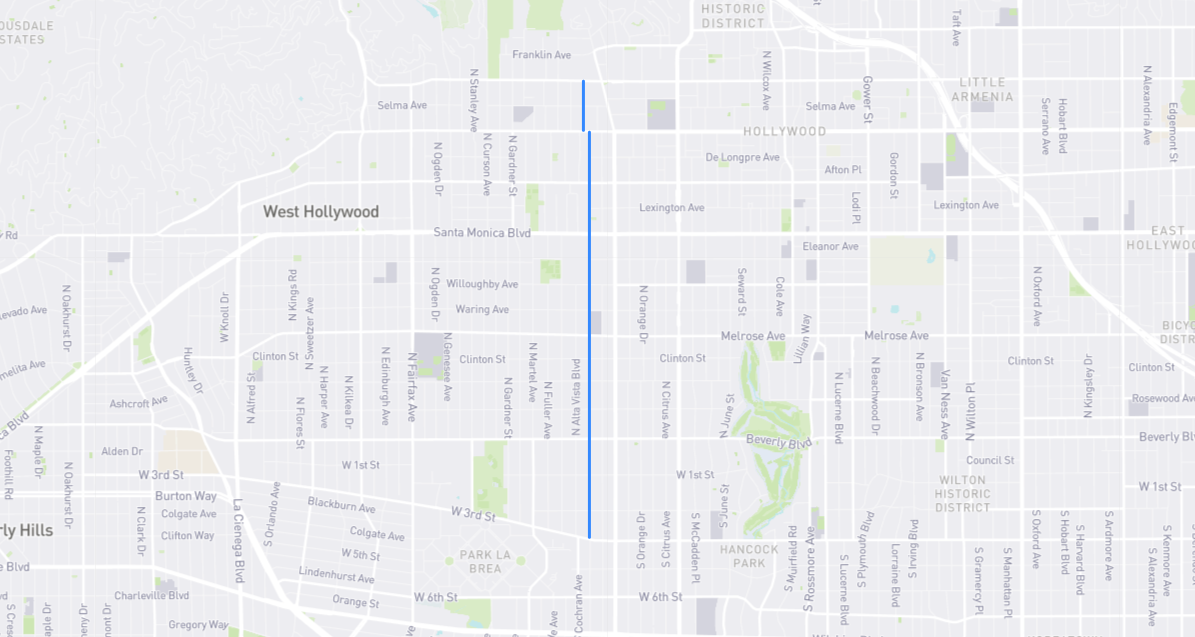Formosa means “beautiful” in Portuguese, but there’s an ugly story behind Formosa Avenue. While most people know Formosa as the old colonial name for Taiwan, this street may well be named for a tiny town in Ontario, Canada. The Formosa tract was set up in 1893 by Lizzie Thurber Hay (1852-1936), who gave its streets personally meaningful names (see Detroit Street). Since records show that Lizzie’s husband Andrew Hay (1846-1903) grew up 50 miles away from Formosa, Ontario, it’s certainly possible that he had a connection to that town. At any rate, the Hays met and married in Saginaw, MI, then came to the Cahuenga Valley in 1881 and bought a ranch southwest of present-day Hollywood and La Brea. Things took a dark turn in March 1883 when Andrew raped the family’s 17-year-old nanny Ella Barrow (1865-1955) along the dusty road home from DTLA. Two weeks later, doubtful that the law would side with her, Ella sought a bit of frontier justice and shot at Andrew in the local post office. She grazed his skull and was arrested for attempted murder. When she explained to the court what he had done to her, Andrew himself was arrested, but Ella’s instincts were right: although Andrew would be tried for her rape four times over the next two years, each trial ended with a hung jury. He was a free man, but the Hays paid a karmic price for his crimes when all four of their children died of smallpox in March 1887. Andrew and Lizzie – who inexplicably stuck by her husband – later had two more kids. Lizzie owned a good deal of land west of Hollywood and in 1905 she let William Hay – likely Andrew’s nephew – subdivide some of it as Crescent Heights.
Find it on the map:

